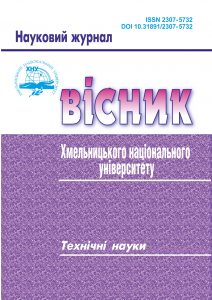CONCRETE BLEND DEVELOPMENT USING GLASS SCRAP FROM SOLAR PHOTOVOLTAIC PANELS
DOI:
https://doi.org/10.31891/2307-5732-2023-329-6-189-192Keywords:
solar photovoltaic panels, glass waste, utilization, cement, concrete, strengthAbstract
The article analyzes the trend of waste generation from solar photovoltaic panels in a general aspect and its accumulation in Ukraine. It is noted that at present, the formation and increase of waste from these panels are influenced by military actions. Considering the absence of silicon-based solar photovoltaic panel manufacturing and glass recycling facilities for the production of new panels of this type in the country, its utilization in obtaining products using mineral raw materials is expedient.
The possibility of using glass from solar photovoltaic panels for partial replacement of cement and the development of concrete samples based on it is considered. The choice of Portland cement and alumina cement for research is substantiated based on their chemical and mineral compositions. A composite material based on Portland cement has been obtained.
The strength values obtained for the developed concretes correspond to the average values for ordinary normal concrete. The developed concretes are suitable for load-bearing elements of brickwork and have a strength class of M500 (grade B40). The concretes based on Portland cement composition and alumina cement have density classes of D2100 and D1800, respectively. The concrete obtained based on the Portland cement composition belongs to heavy concrete, while the one based on alumina cement belongs to lightweight concrete. According to the corresponding strength and class, the concretes should have water resistance classes of W10 and frost resistance classes of F200, which allows them to be used for the production of bridge structures, hydraulic structures, special reinforced concrete structures, bank vaults, subways, dams, and other structures with special requirements.

